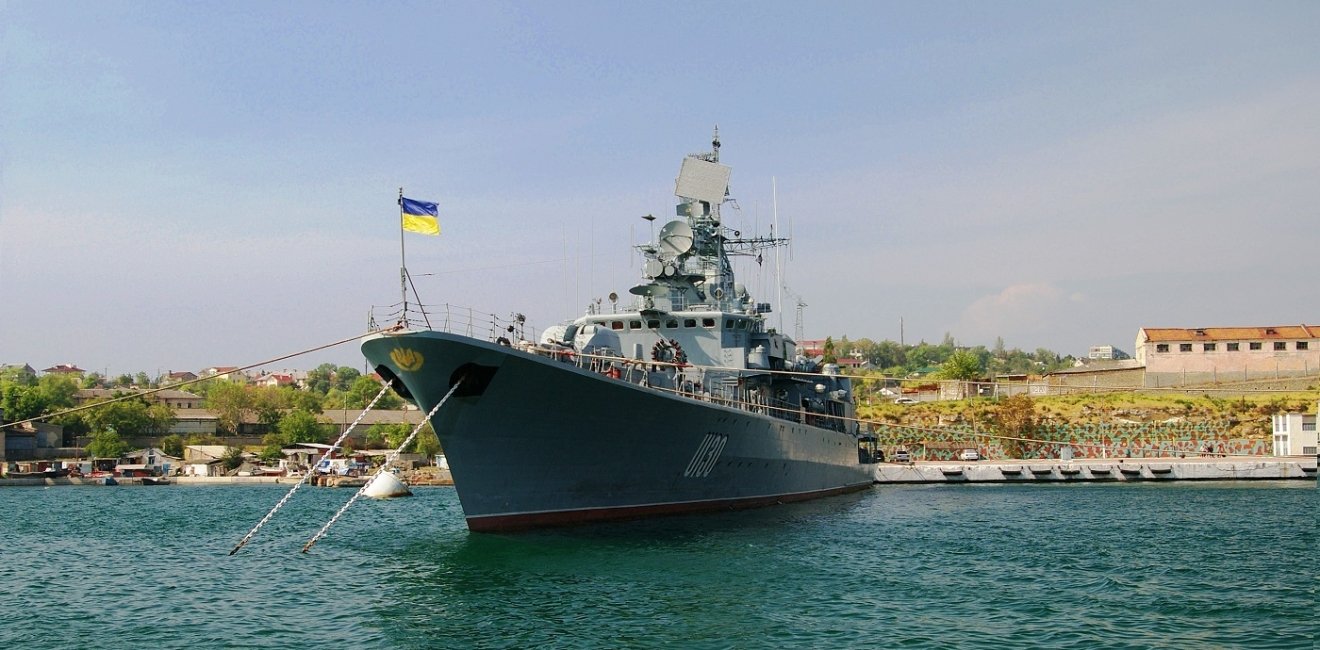
A blog of the Kennan Institute
Ukraine’s ability to project power into the Black Sea has improved significantly since the start of the 2022 war when the Ukrainian navy was forced to scuttle its flagship Hetman Sahaidachny to avoid capture by Russian forces. Though the ship was put out of commission, the fighting spirit of the ship’s namesake lives on in an evolving military maritime strategy. Like its Cossack ancestors, the Ukrainian military has adapted to leverage speed, surprise, and precision attacks to project power to neutralize a much larger naval force. These attacks on Russian warships, air defenses, and military infrastructure, made possible by new weapons systems and improved precision targeting, increasingly threaten Russia’s ability to conduct surface warfare operations in the Black Sea.
Major Ukrainian Maritime Military Operations, 2022 to Present
There have been two distinct phases of Ukrainian maritime military operations since the start of the February 2022 invasion. The first phase lasted from March until July 2022. This phase of operations was defensive in nature and consisted of strikes on targets of opportunity as well as anti-access/area denial operations, which succeeded in denying Russia the ability to conduct amphibious operations west of the Dnipro river. Notable achievements for this time period included the sinking of the Saratov on March 24, the sinking of the Moskva on April 13, and the recapture of Snake Island on June 30. This phase of operations ended with the establishment of the UN-brokered Black Sea Grain Initiative on July 27, 2022.
The second phase of Ukrainian maritime military operations began in July 2023 after Russia withdrew from the UN Black Sea Grain Initiative. This second phase is ongoing and represents a distinctly offensive campaign aimed at neutralizing Russia’s Black Sea Fleet and isolating the Crimean Peninsula. Ukraine has launched a number of high-profile attacks as part of this campaign. Sea drone strikes on the Kerch Bridge on July 17 and on the Olenegorsky Gornyak in Novorossiysk on August 4 demonstrated the growing sophistication and lethality of Ukraine’s indigenously produced seaborne weapons. Ukrainian special operations raids between August and September highlighted serious gaps in Russian coastal defenses by recapturing the Boyko Towers oil rigs and disrupting logistics in Crimea. The most notable operations of this campaign have been Ukraine’s long-range precision missile and drone strikes on Crimea between August and September, which destroyed prized S400 air defenses on the peninsula, damaged the Sevastopol Shipyard and at least two warships being repaired there, and decapitated the leadership of the Russian Black Sea Fleet.
Ukraine’s Military Advantages in the Maritime Environment
This recent string of successful Ukrainian operations highlights an evolving military strategy that turns Russia’s nominal advantages in the size of its shoreline and coastal infrastructure, boosted by its control of occupied Ukrainian territories, into serious liabilities. Russia’s coastline, which encompasses about a third of the Black Sea, includes numerous port cities such as Sevastopol, Novorossiysk, and Sochi, as well as countless pieces of dual use infrastructure, including oil rigs, docks, and bridges, most notably the Kerch Bridge. These are fixed assets that cannot be moved or easily replaced and are therefore especially vulnerable to Ukrainian raids and precision guided weapons.
These vulnerabilities are worsened by geography. Russia’s maritime possessions lie along an arc of coastline oriented to the southeast that runs for hundreds of miles nearly perpendicular to the Russian front lines. Russia cannot easily integrate these pieces of critical infrastructure into its air defense networks covering Russian ground operations to the north because of Ukraine’s ability to locate firing positions in the pocket of land on the country’s southwest corner. Ukraine, by contrast, has actually derived some benefit from its comparable shrunken coastline as the threat of Russian amphibious assault has diminished. Ukraine’s coastal defense of Odesa and Mykolaiv can be better integrated with its land operations owing to proximity to the forward lines of troops.
Evidence of Impact on Russian War effort
This rebalancing of advantage in the Black Sea littoral has provided Ukraine the ability to inflict pain on Russia that the Russian military is increasingly hard-pressed to reciprocate in kind. The threat of Ukrainian missile and drone strikes has visibly diminished Russia’s ability to enforce a blockade of Ukrainian ports. This has allowed Ukraine to defy Russian threats against its shipping and establish temporary grain corridors through the Black Sea. Russia appears to be compensating for its inability to dependably intercept shipping by bombing grain stocks directly.
An even more dramatic indicator of Russia’s shrinking naval control over the Black Sea is the alleged relocation of Russian naval landing ships to the relative safety of the Sea of Azov in the wake of recent attacks on Sevastopol.
Significance
In a war that so far has resulted in the destruction of thousands of vehicles and aircraft, it is easy for observers to write off successful attacks on Russian naval forces as just another piece of Russian hardware reduced to ashes. But this would be a mistake. Navies are major capital assets that cannot be replaced as quickly or easily as land forces. The cost of producing an equivalent warship to replace the sunken Moskva (valued at as much as $750 million), may be equivalent to that of seven hundred T-72 tanks (valued at approximately $1–2 million each).
More than just costly, naval losses are traumatic events, often far greater in impact than defeats suffered on land. Unlike numbered land units, whose legacies can live on through the continued replenishment of soldiers, a named ship that is sunk is gone forever, conveying a greater sense of permanent loss. A case in point is the historical impact of the Russian navy’s defeat at Tsushima in the Russo-Japanese War in May 1905, which even today overshadows the much costlier collapse of the Russian army at the Battle of Mukden suffered only months earlier in the war.
What Happens Next
Barring any dramatic or unforeseeable developments, Ukraine will retain the ability to marginalize the Russian Black Sea Fleet by threatening its surface ships and coastal infrastructure with long-range precision strikes. Russia will have to either divert precious air defenses and electronic warfare systems closer to the southern tip of Crimea or accept limits on the freedom of movement for much of its naval forces in the region. Russia will likely limit its exposure to serious losses and continue its strikes on Ukrainian port facilities to disrupt Ukrainian shipping rather than risk enforcing a blockade.
It is possible that Russia will attempt to compensate for growing conventional weaknesses with subterfuge. Russia has been and will almost certainly continue using civilian shipping to move military equipment around the Black Sea and to bases in Syria. Russia may also use submarines and explosive sea drones in the future to interdict Ukrainian shipping and blame the results on Ukrainian undersea mines.
The opinions expressed in this article are those solely of the author and do not reflect the views of the Kennan Institute.
Author


Kennan Institute
After more than 50 years as a vital part of the Wilson Center legacy, the Kennan Institute has become an independent think tank. You can find the current website for the Kennan Institute at kennaninstitute.org. Please look for future announcements about partnership activities between the Wilson Center and the Kennan Institute at Wilson Center Press Room. The Kennan Institute is the premier US center for advanced research on Eurasia and the oldest and largest regional program at the Woodrow Wilson International Center for Scholars. The Kennan Institute is committed to improving American understanding of Russia, Ukraine, Central Asia, the South Caucasus, and the surrounding region through research and exchange. Read more

Explore More in Focus Ukraine
Browse Focus Ukraine
Talking to the Dead to Heal the Living

Ukrainian Issue in Polish Elections


